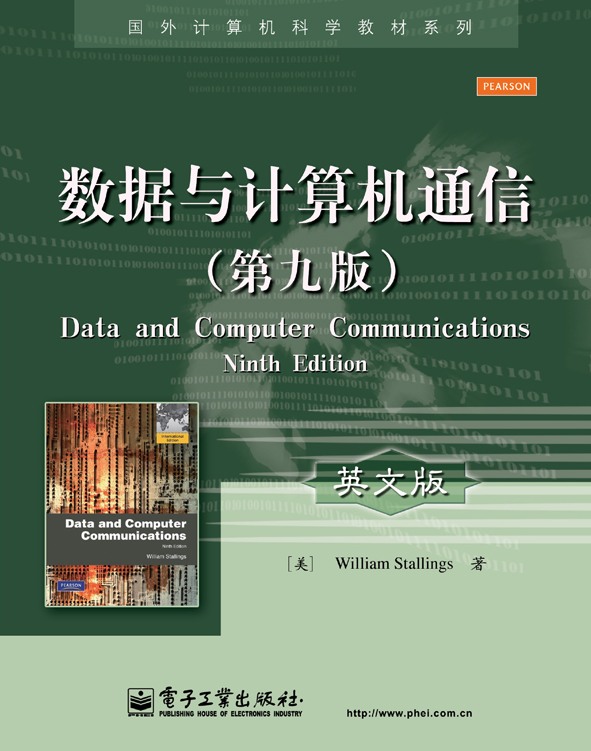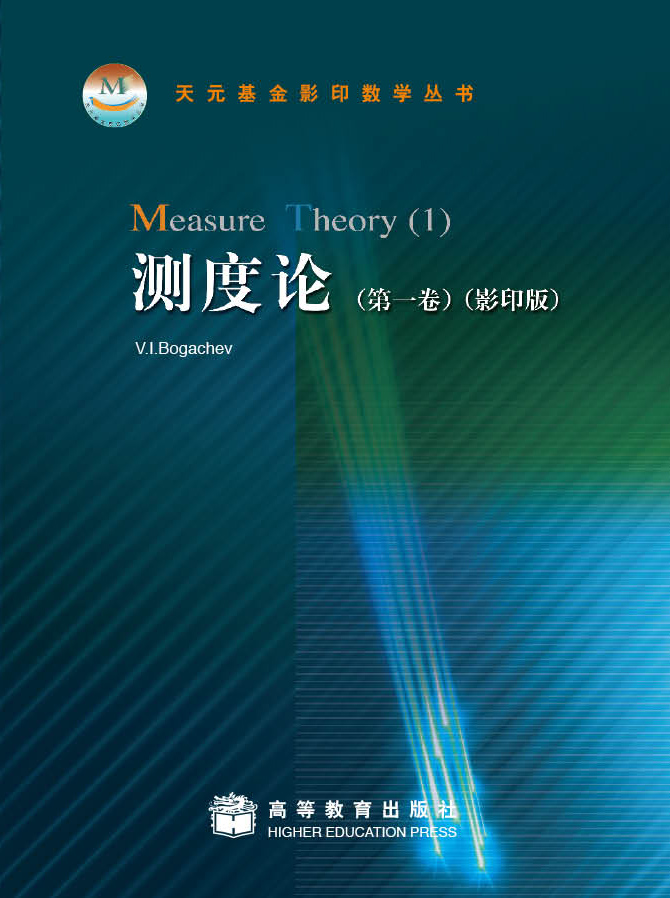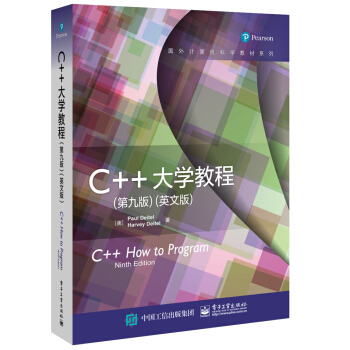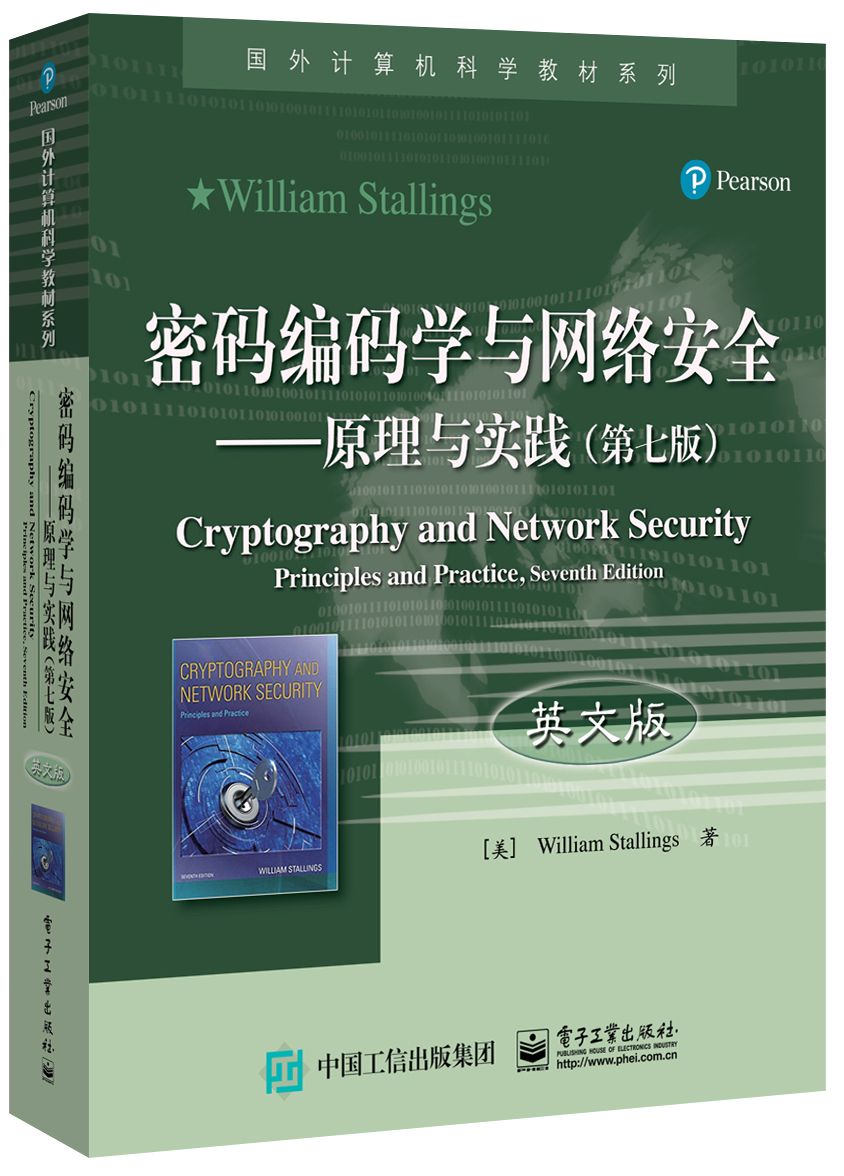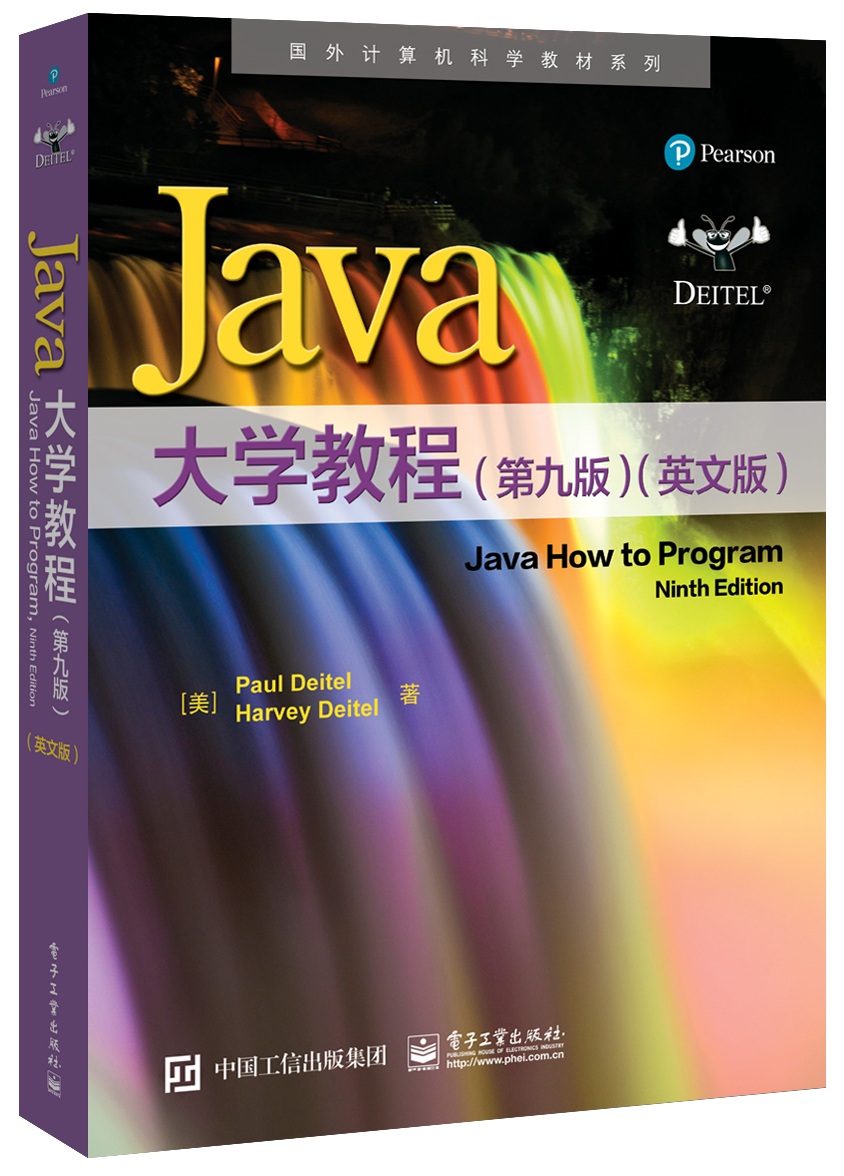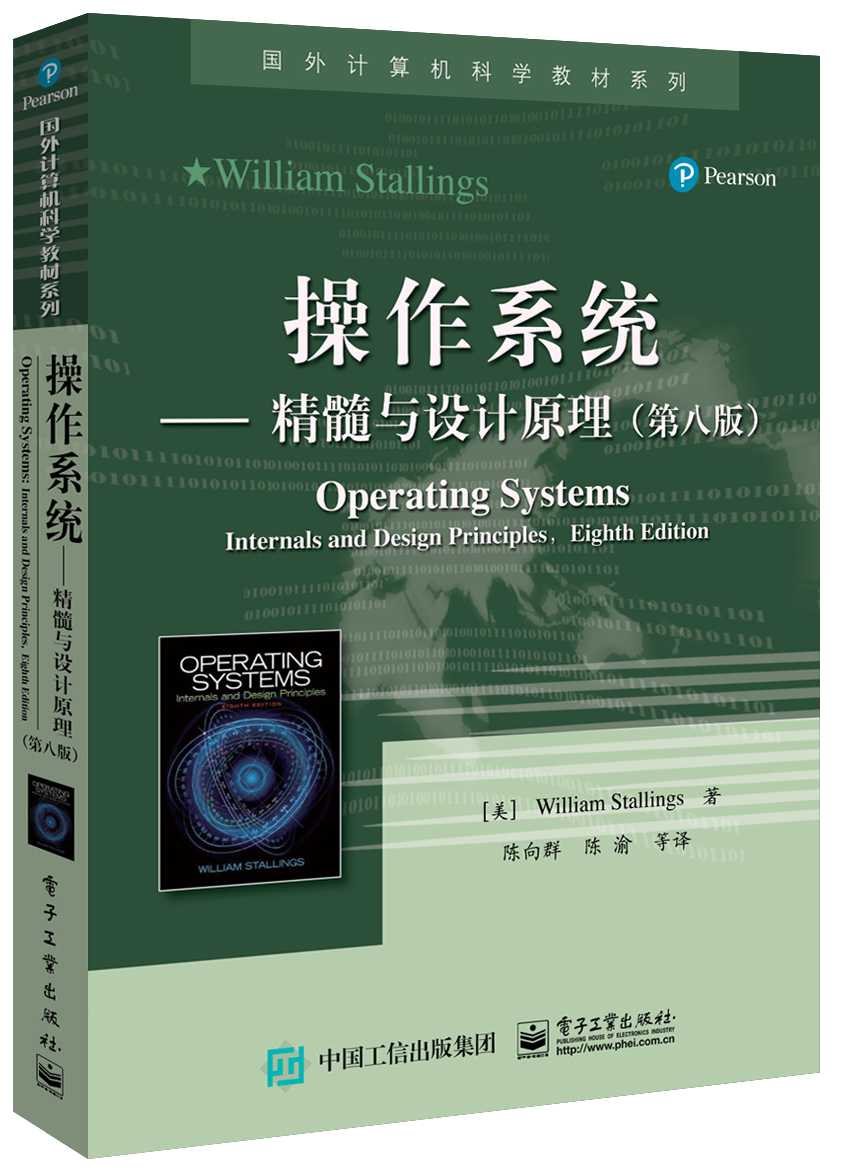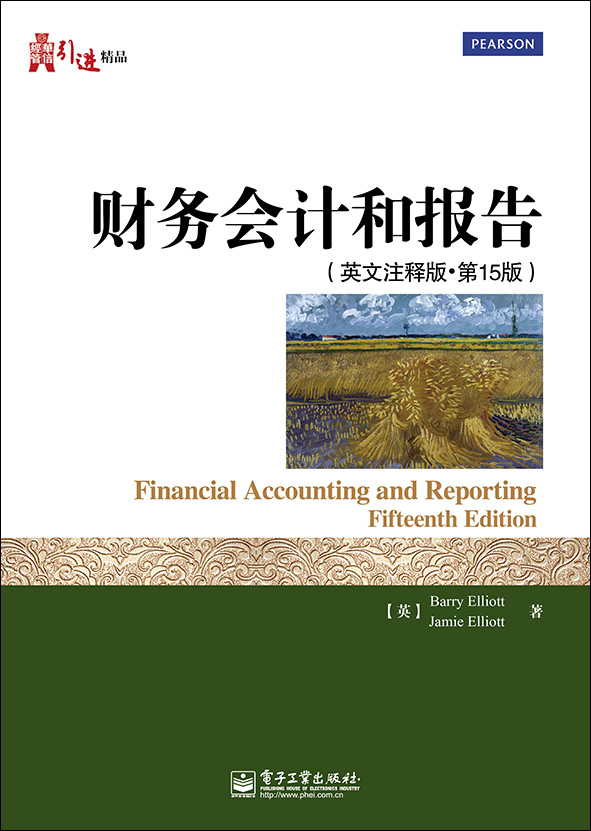- 电子工业出版社
- 9787121229534
- 1-1
- 350279
- 16开
- 2014-05
- 804
- 计算机科学与技术(工学/理学)
- 本科 研究生(硕士、EMBA、MBA、MPA、博士)
内容简介
本书向授课教师提供英文原版教辅(习题解答,PPT,项目手册),具体申请方式请咨询te_service@。本书是著名计算机专业作家William Stallings的经典著作之一,内容涉及基本的数据通信原理、各种类型的计算机网络以及多种网络协议和应用,覆盖面广,信息量大。这一版对上一版内容做了许多改进,使新版对通信领域各专题的阐述更清晰、更紧凑。同时,新版补充了双绞线传输标准、宽带因特网接入、第四代移动无线网络、虚拟局域网、移动IP等内容,修订了高速以太网、无线局域网、MPLS的相关内容,彻底重写了安全相关章节。此外,本书还包括术语表、参考文献、缩写词对照表。每章都附有习题和推荐读物,以便读者进一步阅读。
目录
CONTENTS
Chapter 0 Reader’s and Instructor’s Guide 1
0.1 Outline of the Book 2
0.2 A Roadmap for Readers and Instructors 3
0.3 Internet and Web Resources 5
0.4 Standards 6
PART ONE OVERVIEW 8
Chapter 1 Data Communications, Data Networks, and the Internet 8
1.1 Data Communications and Networking for Today’s Enterprise 9
1.2 A Communications Model 16
1.3 Data Communications 19
1.4 Networks 22
1.5 The Internet 25
1.6 An Example Configuration 30
Chapter 2 Protocol Architecture, TCP/IP, and Internet-Based Applications 32
2.1 The Need for a Protocol Architecture 33
2.2 A Simple Protocol Architecture 34
2.3 The TCP/IP Protocol Architecture 38
2.4 Standardization within a Protocol Architecture 46
2.5 Traditional Internet-Based Applications 49
2.6 Multimedia 50
2.7 Recommended Reading and Web Sites 53
2.8 Key Terms, Review Questions, and Problems 54
Appendix 2A The Trivial File Transfer Protocol 57
PART TWO DATA COMMUNICATIONS 62
Chapter 3 Data Transmission 62
3.1 Concepts and Terminology 64
3.2 Analog and Digital Data Transmission 75
3.3 Transmission Impairments 83
3.4 Channel Capacity 89
3.5 Recommended Reading and Web Site 93
3.6 Key Terms, Review Questions, and Problems 94
Appendix 3A Decibels and Signal Strength 97
Chapter 4 Transmission Media 100
4.1 Guided Transmission Media 102
4.2 Wireless Transmission 116
4.3 Wireless Propagation 124
4.4 Line-of-Sight Transmission 129
4.5 Recommended Reading and Web Sites 133
4.6 Key Terms, Review Questions, and Problems 134
Chapter 5 Signal Encoding Techniques 138
5.1 Digital Data, Digital Signals 141
5.2 Digital Data, Analog Signals 151
5.3 Analog Data, Digital Signals 162
5.4 Analog Data, Analog Signals 168
5.5 Recommended Reading 175
5.6 Key Terms, Review Questions, and Problems 175
Chapter 6 Digital Data Communication Techniques 180
6.1 Asynchronous and Synchronous Transmission 182
6.2 Types of Errors 186
6.3 Error Detection 186
6.4 Error Correction 196
6.5 Line Configurations 202
6.6 Recommended Reading 203
6.7 Key Terms, Review Questions, and Problems 204
Chapter 7 Data Link Control Protocols 208
7.1 Flow Control 210
7.2 Error Control 217
7.3 High-Level Data Link Control (HDLC) 223
7.4 Recommended Reading 230
7.5 Key Terms, Review Questions, and Problems 230
Appendix 7A Performance Issues 233
Chapter 8 Multiplexing 268
8.1 Frequency Division Multiplexing 243
8.2 Synchronous Time Division Multiplexing 249
8.3 Statistical Time Division Multiplexing 259
8.4 Asymmetric Digital Subscriber Line 266
8.5 xDSL 298
8.6 Recommended Reading and Web Sites 272
8.7 Key Terms, Review Questions, and Problems 273
Chapter 9 Spread Spectrum 276
9.1 The Concept of Spread Spectrum 278
9.2 Frequency-Hopping Spread Spectrum 279
9.3 Direct Sequence Spread Spectrum 284
9.4 Code Division Multiple Access 290
9.5 Recommended Reading and Web Site 294
9.6 Key Terms, Review Questions, and Problems 294
PART THREE WIDE AREA NETWORKS 298
Chapter 10 Circuit Switching and Packet Switching 298
10.1 Switched Communications Networks 300
10.2 Circuit-Switching Networks 302
10.3 Circuit-Switching Concepts 305
10.4 Softswitch Architecture 309
10.5 Packet-Switching Principles 310
10.6 Recommended Reading 320
10.7 Key Terms, Review Questions, and Problems 320
Chapter 11 Asynchronous Transfer Mode 323
11.1 The Role of ATM 325
11.2 Protocol Architecture 326
11.3 ATM Logical Connections 328
11.4 ATM Cells 333
11.5 Transmission of ATM Cells 339
11.6 ATM Service Categories 343
11.7 Recommended Reading and Web Sites 346
11.8 Key Terms, Review Questions, and Problems 347
Chapter 12 Routing in Switched Data Networks 350
12.1 Routing in Packet-Switching Networks 351
12.2 Examples: Routing in ARPANET 361
12.3 Least-Cost Algorithms 367
12.4 Recommended Reading 372
12.5 Key Terms, Review Questions, and Problems 373
Chapter 13 Congestion Control in Data Networks 377
13.1 Effects of Congestion 379
13.2 Congestion Control 384
13.3 Traffic Management 386
13.4 Congestion Control in Packet-Switching Networks 388
13.5 ATM Traffic Management 388
13.6 ATM–GFR Traffic Management 400
13.7 Recommended Reading 403
13.8 Key Terms, Review Questions, and Problems 404
Chapter 14 Cellular Wireless Networks 407
14.1 Principles of Cellular Networks 408
14.2 First-Generation Analog 422
14.3 Second-Generation CDMA 423
14.4 Third-Generation Systems 429
14.5 Fourth-Generation Systems 433
14.6 Recommended Reading and Web Sites 438
14.7 Key Terms, Review Questions, and Problems 439
PART FOUR LOCAL AREA NETWORKS 442
Chapter 15 Local Area Network Overview 442
15.1 Topologies and Transmission Media 443
15.2 LAN Protocol Architecture 449
15.3 Bridges 457
15.4 Hubs and Switches 465
15.5 Virtual LANs 469
15.6 Recommended Reading and Web Sites 474
15.7 Key Terms, Review Questions, and Problems 474
Chapter 16 Ethernet 477
16.1 Traditional Ethernet 479
16.2 High-Speed Ethernet 489
16.3 IEEE 802.1Q VLAN Standard 498
16.4 Recommended Reading and Web Sites 500
16.5 Key Terms, Review Questions, and Problems 500
Appendix 16A Digital Signal Encoding for LANs 503
Appendix 16B Scrambling 510
Chapter 17 Wireless LANs 513
17.1 Overview 514
17.2 Wireless LAN Technology 519
17.3 IEEE 802.11 Architecture and Services 521
17.4 IEEE 802.11 Medium Access Control 526
17.5 IEEE 802.11 Physical Layer 533
17.6 Recommended Reading and Web Sites 541
17.7 Key Terms, Review Questions, and Problems 542
PART FIVE INTERNET AND TRANSPORT PROTOCOLS 545
Chapter 18 Internet Protocols 545
18.1 Principles of Internetworking 546
18.2 Internet Protocol Operation 551
18.3 Internet Protocol 558
18.4 IPv6 568
18.5 Virtual Private Networks and IP Security 577
18.6 Recommended Reading and Web Sites 580
18.7 Key Terms, Review Questions, and Problems 581
Chapter 19 Internetwork Operation 585
19.1 Multicasting 586
19.2 Routing Protocols 596
19.3 Mobile IP 607
19.4 Recommended Reading and Web Sites 619
19.5 Key Terms, Review Questions, and Problems 620
Chapter 20 Internetwork Quality of Service 623
20.1 Integrated Services Architecture 625
20.2 Resource Reservation Protocol 634
20.3 Differentiated Services 644
20.4 Service Level Agreements 652
20.5 IP Performance Metrics 654
20.6 Recommended Reading and Web Sites 657
20.7 Key Terms, Review Questions, and Problems 659
Chapter 21 Multiprotocol Label Switching 661
21.1 The Role of MPLS 663
21.2 Backgrounds 665
21.3 MPLS Operation 667
21.4 Labels 672
21.5 FECs, LSPs, and Labels 676
21.6 Label Distribution 678
21.7 Traffic Engineering 682
21.8 Virtual Private Networks 687
21.9 Recommended Reading and Web Sites 689
21.10 Key Terms, Review Questions, and Problems 690
Chapter 22 Transport Protocols 692
22.1 Connection-Oriented Transport Protocol Mechanisms 694
22.2 TCP 712
22.3 TCP Congestion Control 720
22.4 UDP 731
22.5 Recommended Reading and Web Sites 732
22.6 Key Terms, Review Questions, and Problems 733
APPENDICES 737
Appendix A Fourier Analysis 737
A.1 Fourier Series Representation of Periodic Signals 738
A.2 Fourier Transform Representation of Aperiodic Signals 739
A.3 Recommended Reading 742
Appendix B Projects and Other Student Exercises for Teaching Data and Computer Communications 743
B.1 Animations and Animation Projects 744
B.2 Practical Exercises 745
B.3 Sockets Projects 745
B.4 Wireshark Projects 746
B.5 Simulation and Modeling Projects 746
B.6 Performance Modeling 747
B.7 Research Projects 747
B.8 Reading/Report Assignments 748
B.9 Writing Assignments 748
B.10 Discussion Topics 748
References 749
Index 762
PART SIX NETWORK SECURITY(第23章和第24章的文件可登录华信教育资源网()注册下载)
Chapter 23 Computer and Network Security Threats
23.1 Computer Security Concepts
23.2 Threats, Attacks, and Assets
23.3 Intruders
23.4 Malicious Software Overview
23.5 Viruses, Worms, and Bots
23.6 Recommended Reading and Web Sites
23.7 Key Terms, Review Questions, and Problems
Chapter 24 Computer and Network Security Techniques
24.1 Virtual Private Networks and IPsec
24.2 SSL and TLS
24.3 Wi-Fi Protected Access
24.4 Intrusion Detection
24.5 Firewalls
24.6 Malware Defense
24.7 Recommended Reading and Web sites
24.8 Key Terms, Review Questions, and Problems
ONLINE CHAPTERS
PART SEVEN INTERNET APPLICATIONS 25-1
Chapter 25 Electronic Mail, DNS, and HTTP 25-1
25.1 Electronic Mail: SMTP and MIME 25-2
25.2 Internet Directory Service: DNS 25-17
25.3 Web Access and HTTP 25-28
25.4 Recommended Reading and Web Sites 25-40
25.5 Key Terms, Review Questions, and Problems 25-41
Chapter 26 Internet Multimedia Support 26-1
26.1 Real-Time Traffic 26-2
26.2 Voice Over IP and Multimedia Support— SIP 26-5
26.3 Real-Time Transport Protocol 26-15
26.4 Recommended Reading and Web Sites 26-25
26.5 Key Terms, Review Questions, and Problems 26-26
ONLINE APPENDICES
Appendix C Standards Organizations
C.1 The Importance of Standards
C.2 Standards-Setting Organizations
Appendix D The OSI Model
D.1 The Model
D.2 The OSI Layers
Appendix E The International Reference Alphabet
Appendix F Proof of the Sampling Theorem
Appendix G Physical-Layer Interfacing
G.1 V.24/EIA-232-F
G.2 ISDN Physical Interface
Appendix H Queuing Effects
H.1 Queuing Models
H.2 Queuing Results
Appendix I ATM Adaptation Layer
I.1 AAL Services
I.2 AAL Protocols
Appendix J Leaky Bucket Algorithms
J.1 Peak Cell Rate Algorithm
J.2 Sustainable Cell Rate Algorithm
Appendix K The Spanning Tree Algorithm
Appendix L LAN Performance Issues
L.1 The Effect of Propagation Delay and Transmission Rate
L.2 Simple Performance Model for CSMA/CD
Appendix M Fibre Channel
M.1 Fibre Channel Elements
M.2 Fibre Channel Protocol Architecture
M.3 Fibre Channel Physical Media and Topologies
Appendix N Orthogonality, Correlation, and Autocorrelation
N.1 Correlation and Autocorrelation
N.2 Orthogonal Codes
Appendix O TCP/IP Example
Appendix P The TCP/IP Checksum
P.1 Ones Complement Addition
P.2 Use in TCP and IP
Appendix Q Cryptographic Algorithms
Q.1 Symmetric Encryption
Q.2 Public-Key Cryptography
Q.3 Secure Hash Functions
Appendix R Uniform Resource Locators (URLs) and Uniform Resource Identifiers (URIs)
R.1 Uniform Resource Locator
R.2 Uniform Resource Identifier
R.3 To Learn More
Appendix S Augmented Backus-Naur Form
Appendix T Sockets: A Programmer’s Introduction
T.1 Sockets, Socket Descriptors, Ports, and Connections
T.2 The Client/Server Model of Communication
T.3 Sockets Elements
T.4 Stream and Datagram Sockets
T.5 Run-Time Program Control
T.6 Remote Execution of a Windows Console Application
Appendix U Frame Relay
U.1 X.25
U.2 Frame Relay
U.3 Frame Relay Congestion Control
U.4 Problems
Appendix V Derivations of Equations and Examples
Glossary
Chapter 0 Reader’s and Instructor’s Guide 1
0.1 Outline of the Book 2
0.2 A Roadmap for Readers and Instructors 3
0.3 Internet and Web Resources 5
0.4 Standards 6
PART ONE OVERVIEW 8
Chapter 1 Data Communications, Data Networks, and the Internet 8
1.1 Data Communications and Networking for Today’s Enterprise 9
1.2 A Communications Model 16
1.3 Data Communications 19
1.4 Networks 22
1.5 The Internet 25
1.6 An Example Configuration 30
Chapter 2 Protocol Architecture, TCP/IP, and Internet-Based Applications 32
2.1 The Need for a Protocol Architecture 33
2.2 A Simple Protocol Architecture 34
2.3 The TCP/IP Protocol Architecture 38
2.4 Standardization within a Protocol Architecture 46
2.5 Traditional Internet-Based Applications 49
2.6 Multimedia 50
2.7 Recommended Reading and Web Sites 53
2.8 Key Terms, Review Questions, and Problems 54
Appendix 2A The Trivial File Transfer Protocol 57
PART TWO DATA COMMUNICATIONS 62
Chapter 3 Data Transmission 62
3.1 Concepts and Terminology 64
3.2 Analog and Digital Data Transmission 75
3.3 Transmission Impairments 83
3.4 Channel Capacity 89
3.5 Recommended Reading and Web Site 93
3.6 Key Terms, Review Questions, and Problems 94
Appendix 3A Decibels and Signal Strength 97
Chapter 4 Transmission Media 100
4.1 Guided Transmission Media 102
4.2 Wireless Transmission 116
4.3 Wireless Propagation 124
4.4 Line-of-Sight Transmission 129
4.5 Recommended Reading and Web Sites 133
4.6 Key Terms, Review Questions, and Problems 134
Chapter 5 Signal Encoding Techniques 138
5.1 Digital Data, Digital Signals 141
5.2 Digital Data, Analog Signals 151
5.3 Analog Data, Digital Signals 162
5.4 Analog Data, Analog Signals 168
5.5 Recommended Reading 175
5.6 Key Terms, Review Questions, and Problems 175
Chapter 6 Digital Data Communication Techniques 180
6.1 Asynchronous and Synchronous Transmission 182
6.2 Types of Errors 186
6.3 Error Detection 186
6.4 Error Correction 196
6.5 Line Configurations 202
6.6 Recommended Reading 203
6.7 Key Terms, Review Questions, and Problems 204
Chapter 7 Data Link Control Protocols 208
7.1 Flow Control 210
7.2 Error Control 217
7.3 High-Level Data Link Control (HDLC) 223
7.4 Recommended Reading 230
7.5 Key Terms, Review Questions, and Problems 230
Appendix 7A Performance Issues 233
Chapter 8 Multiplexing 268
8.1 Frequency Division Multiplexing 243
8.2 Synchronous Time Division Multiplexing 249
8.3 Statistical Time Division Multiplexing 259
8.4 Asymmetric Digital Subscriber Line 266
8.5 xDSL 298
8.6 Recommended Reading and Web Sites 272
8.7 Key Terms, Review Questions, and Problems 273
Chapter 9 Spread Spectrum 276
9.1 The Concept of Spread Spectrum 278
9.2 Frequency-Hopping Spread Spectrum 279
9.3 Direct Sequence Spread Spectrum 284
9.4 Code Division Multiple Access 290
9.5 Recommended Reading and Web Site 294
9.6 Key Terms, Review Questions, and Problems 294
PART THREE WIDE AREA NETWORKS 298
Chapter 10 Circuit Switching and Packet Switching 298
10.1 Switched Communications Networks 300
10.2 Circuit-Switching Networks 302
10.3 Circuit-Switching Concepts 305
10.4 Softswitch Architecture 309
10.5 Packet-Switching Principles 310
10.6 Recommended Reading 320
10.7 Key Terms, Review Questions, and Problems 320
Chapter 11 Asynchronous Transfer Mode 323
11.1 The Role of ATM 325
11.2 Protocol Architecture 326
11.3 ATM Logical Connections 328
11.4 ATM Cells 333
11.5 Transmission of ATM Cells 339
11.6 ATM Service Categories 343
11.7 Recommended Reading and Web Sites 346
11.8 Key Terms, Review Questions, and Problems 347
Chapter 12 Routing in Switched Data Networks 350
12.1 Routing in Packet-Switching Networks 351
12.2 Examples: Routing in ARPANET 361
12.3 Least-Cost Algorithms 367
12.4 Recommended Reading 372
12.5 Key Terms, Review Questions, and Problems 373
Chapter 13 Congestion Control in Data Networks 377
13.1 Effects of Congestion 379
13.2 Congestion Control 384
13.3 Traffic Management 386
13.4 Congestion Control in Packet-Switching Networks 388
13.5 ATM Traffic Management 388
13.6 ATM–GFR Traffic Management 400
13.7 Recommended Reading 403
13.8 Key Terms, Review Questions, and Problems 404
Chapter 14 Cellular Wireless Networks 407
14.1 Principles of Cellular Networks 408
14.2 First-Generation Analog 422
14.3 Second-Generation CDMA 423
14.4 Third-Generation Systems 429
14.5 Fourth-Generation Systems 433
14.6 Recommended Reading and Web Sites 438
14.7 Key Terms, Review Questions, and Problems 439
PART FOUR LOCAL AREA NETWORKS 442
Chapter 15 Local Area Network Overview 442
15.1 Topologies and Transmission Media 443
15.2 LAN Protocol Architecture 449
15.3 Bridges 457
15.4 Hubs and Switches 465
15.5 Virtual LANs 469
15.6 Recommended Reading and Web Sites 474
15.7 Key Terms, Review Questions, and Problems 474
Chapter 16 Ethernet 477
16.1 Traditional Ethernet 479
16.2 High-Speed Ethernet 489
16.3 IEEE 802.1Q VLAN Standard 498
16.4 Recommended Reading and Web Sites 500
16.5 Key Terms, Review Questions, and Problems 500
Appendix 16A Digital Signal Encoding for LANs 503
Appendix 16B Scrambling 510
Chapter 17 Wireless LANs 513
17.1 Overview 514
17.2 Wireless LAN Technology 519
17.3 IEEE 802.11 Architecture and Services 521
17.4 IEEE 802.11 Medium Access Control 526
17.5 IEEE 802.11 Physical Layer 533
17.6 Recommended Reading and Web Sites 541
17.7 Key Terms, Review Questions, and Problems 542
PART FIVE INTERNET AND TRANSPORT PROTOCOLS 545
Chapter 18 Internet Protocols 545
18.1 Principles of Internetworking 546
18.2 Internet Protocol Operation 551
18.3 Internet Protocol 558
18.4 IPv6 568
18.5 Virtual Private Networks and IP Security 577
18.6 Recommended Reading and Web Sites 580
18.7 Key Terms, Review Questions, and Problems 581
Chapter 19 Internetwork Operation 585
19.1 Multicasting 586
19.2 Routing Protocols 596
19.3 Mobile IP 607
19.4 Recommended Reading and Web Sites 619
19.5 Key Terms, Review Questions, and Problems 620
Chapter 20 Internetwork Quality of Service 623
20.1 Integrated Services Architecture 625
20.2 Resource Reservation Protocol 634
20.3 Differentiated Services 644
20.4 Service Level Agreements 652
20.5 IP Performance Metrics 654
20.6 Recommended Reading and Web Sites 657
20.7 Key Terms, Review Questions, and Problems 659
Chapter 21 Multiprotocol Label Switching 661
21.1 The Role of MPLS 663
21.2 Backgrounds 665
21.3 MPLS Operation 667
21.4 Labels 672
21.5 FECs, LSPs, and Labels 676
21.6 Label Distribution 678
21.7 Traffic Engineering 682
21.8 Virtual Private Networks 687
21.9 Recommended Reading and Web Sites 689
21.10 Key Terms, Review Questions, and Problems 690
Chapter 22 Transport Protocols 692
22.1 Connection-Oriented Transport Protocol Mechanisms 694
22.2 TCP 712
22.3 TCP Congestion Control 720
22.4 UDP 731
22.5 Recommended Reading and Web Sites 732
22.6 Key Terms, Review Questions, and Problems 733
APPENDICES 737
Appendix A Fourier Analysis 737
A.1 Fourier Series Representation of Periodic Signals 738
A.2 Fourier Transform Representation of Aperiodic Signals 739
A.3 Recommended Reading 742
Appendix B Projects and Other Student Exercises for Teaching Data and Computer Communications 743
B.1 Animations and Animation Projects 744
B.2 Practical Exercises 745
B.3 Sockets Projects 745
B.4 Wireshark Projects 746
B.5 Simulation and Modeling Projects 746
B.6 Performance Modeling 747
B.7 Research Projects 747
B.8 Reading/Report Assignments 748
B.9 Writing Assignments 748
B.10 Discussion Topics 748
References 749
Index 762
PART SIX NETWORK SECURITY(第23章和第24章的文件可登录华信教育资源网()注册下载)
Chapter 23 Computer and Network Security Threats
23.1 Computer Security Concepts
23.2 Threats, Attacks, and Assets
23.3 Intruders
23.4 Malicious Software Overview
23.5 Viruses, Worms, and Bots
23.6 Recommended Reading and Web Sites
23.7 Key Terms, Review Questions, and Problems
Chapter 24 Computer and Network Security Techniques
24.1 Virtual Private Networks and IPsec
24.2 SSL and TLS
24.3 Wi-Fi Protected Access
24.4 Intrusion Detection
24.5 Firewalls
24.6 Malware Defense
24.7 Recommended Reading and Web sites
24.8 Key Terms, Review Questions, and Problems
ONLINE CHAPTERS
PART SEVEN INTERNET APPLICATIONS 25-1
Chapter 25 Electronic Mail, DNS, and HTTP 25-1
25.1 Electronic Mail: SMTP and MIME 25-2
25.2 Internet Directory Service: DNS 25-17
25.3 Web Access and HTTP 25-28
25.4 Recommended Reading and Web Sites 25-40
25.5 Key Terms, Review Questions, and Problems 25-41
Chapter 26 Internet Multimedia Support 26-1
26.1 Real-Time Traffic 26-2
26.2 Voice Over IP and Multimedia Support— SIP 26-5
26.3 Real-Time Transport Protocol 26-15
26.4 Recommended Reading and Web Sites 26-25
26.5 Key Terms, Review Questions, and Problems 26-26
ONLINE APPENDICES
Appendix C Standards Organizations
C.1 The Importance of Standards
C.2 Standards-Setting Organizations
Appendix D The OSI Model
D.1 The Model
D.2 The OSI Layers
Appendix E The International Reference Alphabet
Appendix F Proof of the Sampling Theorem
Appendix G Physical-Layer Interfacing
G.1 V.24/EIA-232-F
G.2 ISDN Physical Interface
Appendix H Queuing Effects
H.1 Queuing Models
H.2 Queuing Results
Appendix I ATM Adaptation Layer
I.1 AAL Services
I.2 AAL Protocols
Appendix J Leaky Bucket Algorithms
J.1 Peak Cell Rate Algorithm
J.2 Sustainable Cell Rate Algorithm
Appendix K The Spanning Tree Algorithm
Appendix L LAN Performance Issues
L.1 The Effect of Propagation Delay and Transmission Rate
L.2 Simple Performance Model for CSMA/CD
Appendix M Fibre Channel
M.1 Fibre Channel Elements
M.2 Fibre Channel Protocol Architecture
M.3 Fibre Channel Physical Media and Topologies
Appendix N Orthogonality, Correlation, and Autocorrelation
N.1 Correlation and Autocorrelation
N.2 Orthogonal Codes
Appendix O TCP/IP Example
Appendix P The TCP/IP Checksum
P.1 Ones Complement Addition
P.2 Use in TCP and IP
Appendix Q Cryptographic Algorithms
Q.1 Symmetric Encryption
Q.2 Public-Key Cryptography
Q.3 Secure Hash Functions
Appendix R Uniform Resource Locators (URLs) and Uniform Resource Identifiers (URIs)
R.1 Uniform Resource Locator
R.2 Uniform Resource Identifier
R.3 To Learn More
Appendix S Augmented Backus-Naur Form
Appendix T Sockets: A Programmer’s Introduction
T.1 Sockets, Socket Descriptors, Ports, and Connections
T.2 The Client/Server Model of Communication
T.3 Sockets Elements
T.4 Stream and Datagram Sockets
T.5 Run-Time Program Control
T.6 Remote Execution of a Windows Console Application
Appendix U Frame Relay
U.1 X.25
U.2 Frame Relay
U.3 Frame Relay Congestion Control
U.4 Problems
Appendix V Derivations of Equations and Examples
Glossary

